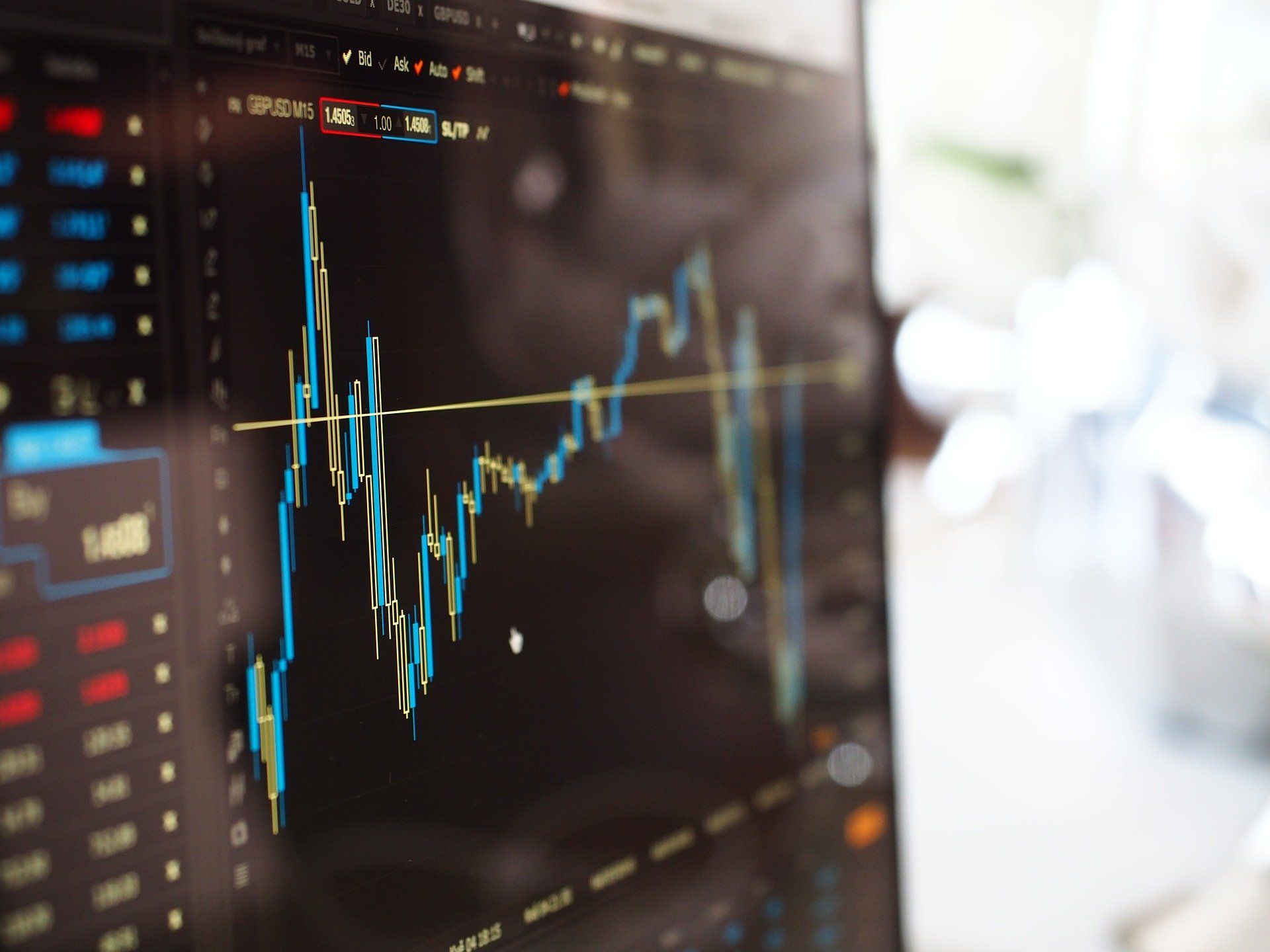Indian equity benchmarks fell for the second day in a row on Monday, tracking poor trade in Asian market peers as a result of a worldwide sell-off driven by aggressive US Fed tightening and China-related concerns.
Also Read| ‘You’re throwing me under the bus’: Musk’s spat with Saudi fund revealed
The Nifty50 has formed a small negative on the daily chart with minor upper and lower shadows, according to Nagaraj Shetti, Technical Research Analyst at HDFC Securities. He said buying can emerge from close to 16,800.
Also Read| Melissa Lucio execution delayed by Texas appeals court amid growing doubts
“The index is placed at the support of its previous swing low (April 19) and its 200-day exponential moving average around 16,850. The lower end of a crucial Doji pattern on the weekly chart is at 16,850, where a reasonable bounce has occurred in the recent past,” he said.
Also Read| SpaceX’s Starlink inks in-flight WiFi deal with Hawaiian Airlines
Sensex fell 617.26 points or 1.08% to 56,579.89 and Nifty was down by 218.00 points or 1.27% to 16,953.95 in the previous session. Sensex touched a high and low of 56,875.65 and 56,356.87, respectively. There were 8 stocks advancing against 22 stocks declining on the index. Nifty traded in a range of 17,054.30 and 16,888.70. There were 8 stocks advancing against 42 stocks declining on the index.
Also Read| Kylie Jenner testifies she warned brother Rob Kardashian about Blac Chyna
Broader Indices
The broader indices ended in red with the BSE Midcap index falling 1.86%, while the Small cap index was down by 1.88%. The lone gaining sectoral index on the BSE was Bankex up by 0.12%, while Metal down by 3.71%, Realty down by 3.70%, Energy down by 2.74%, Telecom down by 2.62% and Oil & Gas down by 2.53% were the top losing indices on BSE.
Also Read| Why Trump’s SPAC plunged 44% since Elon Musk disclosed Twitter stake
India VIX Index
Nifty or India VIX, a gauge of the market’s expectation of volatility over the near term, rose 15.83% to 21.26 on Monday.
SGX Nifty
The trends on SGX Nifty indicate a flat opening for the index in India with a 3-points loss. The Nifty futures were trading at 17,124.80 on the Singaporean Exchange around 06:55 hours IST.
Also Read| ‘Enjoy it’: Guardiola urges Man City players to relish Real Madrid clash
Support and Resistance levels
The key support level for the Nifty is placed at 16,877, followed by 16,800. If the index moves up, the key resistance levels to watch out for are 17,043 and 17,131, according to pivot charts.
The S&P 500 rose 24.34 points, or 0.6%, to 4,296.12.
The Dow Jones Industrial Average rose 238.06 points, or 0.7%, to 34,049.46.
The Nasdaq rose 165.56 points, or 1.3%, to 13,004.85.
The Russell 2000 index of smaller companies rose 13.54 points, or 0.7%, to 1,954.20.
Also Read| White House warns more will die without urgent COVID-19 funding
Asian Markets
Asian markets finished sharply lower yesterday with shares in China leading the region. The Shanghai Composite was down 5.13% while Hong Kong’s Hang Seng was off 3.69% and Japan’s Nikkei 225 was lower by 1.90%.
European Markets
European markets finished sharply lower yesterday with shares in France leading the region. The CAC 40 was down 2.01% while London’s FTSE 100 was off 1.88% and Germany’s DAX was lower by 1.54%.
Also Read| Sanctions against Vladimir Putin’s alleged lover Alina Kabaeva tabled, but why?
Major News Headlines
LIC IPO: Insurance behemoth likely to go public on May 4
The initial public offering (IPO) of the Life Insurance Corporation (LIC) of India is expected to open on May 4, reported CNBC TV18. The issue is expected to close on May 9, and the anchor book for the LIC IPO is likely to open on May 2, the report said. The Securities and Exchange Board of India (SEBI) has approved the updated draft red herring prospectus (DRHP), which lists a 3.5% stake sale instead of 5% as mentioned in the previous draft papers. The revised DRHP was presented to the SEBI last week. The government owns a 100% stake in the insurance giant and plans to raise an amount of Rs 21,000 crore by selling around 22 crore shares or a 3.5% stake. The LIC board will meet this week to decide the price band for the IPO. The red herring prospectus will be submitted before the market regulator by April 27, the report added. According to the LIC Act, the government can reserve up to 10% for the policyholders. The government is targeting a valuation of Rs 6 trillion for the insurer by seeking Rs 21,00 crore for the revised holding on the block.
Eveready Q4 Results: Net loss stood at Rs 38 crore, revenue jumps over 17%
Battery and flashlights manufacturer Eveready Industries India Ltd, on April 25, reported a consolidated net loss of Rs 38.31 crore in the March quarter of fiscal 2022. The company has reported a net loss of Rs 442.53 crore in the March quarter of the previous financial year. Its revenue from operations grew 17.82% YoY to Rs 294.33 crore during the reported quarter. In the March quarter of fiscal 2021, revenue from operations stood at Rs 249.81 crore. “The quarter continued to experience lower demand in all categories as inflation ruled high. Also, very significant input cost increases due to supply chain disruptions and overall inflationary pressures impacted margins severely. Price increases were taken to offset this resulted in market resistance,” the company said. The flashlights segment continued to suffer due to a fall in imports from China. Eveready Industries’ total expenses stood at Rs 241.23 crore in the March 2022 quarter, down 11.51% from the final quarter of the previous financial year.
In war against inflation, Raghuram Rajan’s prescription for RBI
Inflation is soaring in India as the continuing Russia-Ukraine crisis raises crude oil prices and disrupts supply chains. The wholesale price-based index (WPI) has gone up to a four-month high of 14.55% and retail inflation, based on the consumer price index (CPI) has gone up to 6.95%. Amid this rise, Raghuram Rajan, former head of India’s central bank, says the Reserve Bank of India (RBI) will have to finally increase interest rates to bring inflation under control. “At some point, the RBI will have to raise rates, like the rest of the world is doing,” the 23rd governor of RBI, and now a professor of finance at the University of Chicago Booth wrote in a post on LinkedIn titled “Fighting Inflation Again”. In his post, Rajan reminisces about his term as the head of India’s central bank and how India fought inflation at the time. “I became RBI governor with a three-year term in September 2013 when India had a full-blown currency crisis with the rupee having experienced a free fall,” Rajan said adding that inflation was at 9.5% then. “The RBI raised the repo rate from 7.25% in September 2013 to 8% to quell inflation. As inflation came down, we cut the repo rate by 150 basis points to 6.5%,” he wrote.
India’s economy to grow up to 8% in current fiscal, says CII president
India’s economy is expected to grow at 7.5%-8% in this financial year, with exports playing a crucial role in the country’s success story, said CII President TV Narendran. He stated that the country should stay prepared for any consequences of the upcoming wave of the COVID-19 pandemic and the impact of the Russia-Ukraine war. “We are confident that the economy can retain a high growth trajectory this year. So, we are very optimistic on the export front. Exports will be a key component of India’s success story going forward,” Narendran said. The comeback of the COVID-19 worldwide will impact the global supply chain and CII’s India economic growth estimate of 7.5%-8% in the current financial year factor these developments, the President of the industry body told PTI. “The experience with COVID shows that every time there is a fresh wave globally, it does hit India as well. Therefore, we must be prepared for the future waves,” he said.
Also Read| PL: Leeds move 5 points clear of relegation zone after draw against Palace
SATYA PRAKASH BAGLA sold 8,24,593 shares in Asian Hotels (North) Ltd at Rs 84.22 per share on the NSE.
EUSTON INDUSTRIES LIMITED sold 25,00,000 shares in Birla Tyres Limited at Rs 15.16 per share on the NSE.
SHRRADHA PUNIT BANSAL bought 70,000 shares in Crown Lifters Limited at Rs 34.99 per share on the NSE.
Also Read| Russia’s Sergey Lavrov says possibility of World War III is very ‘real’
ANAND RATHI GLOBAL FINANCE LTD sold 7,35,140 shares in Gokul Refoils and Solvent at Rs 45.97 per share on the NSE.
KOTHARI MEENAXI DILIP bought 1,12,500 shares in GSS Infotech Limited at Rs 149.87 per share on the NSE.
PADMAVATI INVESTMENT bought 31,00,000 shares in KBC Global Limited at Rs 10.65 per share on the NSE.
Also Read| Elon Musk outlines vision for Twitter, wants his ‘worst critics’ to stay
RIDHI GOYAL sold 3,34,000 shares in Megastar Foods Limited at Rs 138.34 per share on the NSE.
SETU SECURITIES PVT LTD sold 10,00,000 shares in MEP Infra. Developers Limited at Rs 24.30 per share on the NSE.
NARANTAK DEALCOMM LIMITED bought 46,000 shares in N.B.I. Ind. Fin. Co. Limited at Rs 2159.50 per share on the NSE.
Also Read| Canadian defence minister warns of extremist infiltration in military
NILAY RAMESH CHANDRA SHAH bought 2,75,000 shares in North East Carry Corp Limited at Rs 34.94 per share on the NSE.
SATHISH SRINIVAS NAYAK sold 9,56,670 shares in One Point One Solutions Limited at Rs 26.95 per share on the NSE.
ASHOK KUMAR BANSAL sold 1,05,000 shares in Shiv Aum Steels Limited at Rs 125.93 per share on the NSE.
KREDENCE MULTI TRADING LTD sold 12,18,967 shares in Uttam Galva Steels Limited at Rs 4.60 per share on the NSE.
Also Read| How much will be Jack Dorsey’s share in Twitter’s $44 billion sale to Elon Musk?
Foreign institutional investors (FIIs) sold shares worth a net Rs 3,302.85 crore, while domestic institutional investors (DIIs) bought shares worth a net Rs 1,870.45 crore in the Indian equity market on April 25, as per provisional data available on the NSE.
Also Read| Trump rules out Twitter return despite Musk deal, will be ‘TRUTHing’ instead
No stock/security has been put under the F&O ban for April 26. Securities in the ban period under the F&O segment include companies in which the security has crossed 95% of the market-wide position limit.







